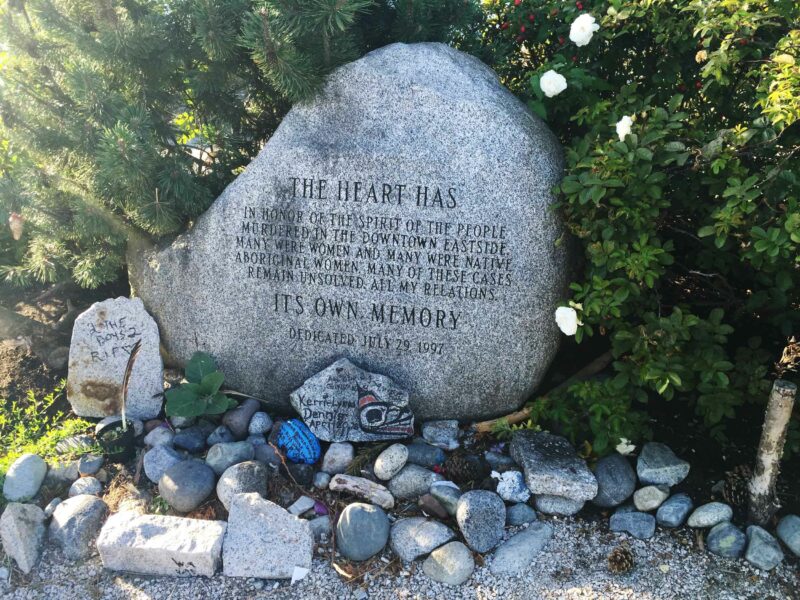By Vicki Chartrand & Gladys Radek
Indigenous women, children, Two-Spirited, and gender diverse people throughout Canada, as elsewhere, have been impacted by a colonial patriarchy of sexual and racialized violence and genocide that continues well into Canada’s present.
This violence is well established in the numerous reports that have documented the magnitude of murders and disappearances of Indigenous women, children, Two-Spirited, and gender diverse people. These reports have also documented police failings in investigating these cases, which have been rife with many discrepancies, inconsistencies, and inadequacies in reporting, investigation, the recording and sharing of information, and acting on missing person’s cases and reports of violence. These failings also include delayed investigations, failures to notify families, failure to investigate cases or lay charges, refusal to respond to complaints, and even perpetrating the violence against Indigenous peoples themselves.
According to the public testimonies, such as those made by the National Inquiry into Missing and Murdered Indigenous Women and Girls, police threatened to terminate their investigations if the families went public or spoke to the media. Some family members were threatened with obstructing justice and arrest if they continued actively searching for the missing. Many of the community members who were interviewed by police reported being ignored or considered unreliable sources when they provided the police with information. The report also points out that the police would release mug shots of the women rather than a family picture, making it more difficult to elicit public support. Oftentimes, new officers were repeatedly assigned to these cases, which resulted in lost information and missed leads.

Unearthing Justices Cross Country Road Trip, Saskatchewan, 2016. Photo: Ari-Matte Kortelainen.
The toll on families
Policing protocols, legal and bureaucratic lingo, absent information, and redacted documents keep families from knowing or understanding what is going on in the investigations of their loved ones, and make them dependent on a system that is designed to keep them segregated and in the dark. Even when an investigation does occur, it fails to systematically look at how the violence intersects with colonialism, sexism, racism, and poverty. As the reports and testimonies confirm, policing works to erase the magnitude of the violence while families and communities compete to keep the cases and memories alive.
These policing failures are also evidenced in the many barriers faced by the families who became their own advocates and investigators. Actively searching for loved ones consumes most if not all of the families’ time, money, resources, and emotion. Self-advocating can include families continually waiting by the phone, constantly searching, putting their lives on hold, losing employment, turning to substances, or losing support.
Families are forced to compete for scarce resources and attention with the police or media, which only further divides and separates the families. In their attempts to advance policing operations and keep the cases open, families are isolated from each other and heavily taxed on time and resources. Their efforts are often individualized, displaced, and fragmented with an array of work required to learn and navigate a criminal justice system, work with the media, or take care of the endless details necessary to pursue settler justice.
Cultivating Justice
In the absence and neglect of police investigations, and in some cases, in the face of police violence and threats, Indigenous families and communities are also central in the pursuit of justice. Not only have Indigenous families and communities been calling for justice over the course of many years, but they have also been cultivating justice across the land to address the murders and disappearances, often with their own resources and in their own way.
This is evident in the magnitude of Indigenous-led and Indigenous-based grassroots initiatives, activities, projects, and events that have been collated and shared in the Unearthing Justices Resource Collection of 500+ Indigenous grassroots initiatives for the missing murdered Indigenous women, girls, Two-spirit, and gender diverse people.
Voices from Indigenous North America Speakers Series, Justice for Indigenous Women and Girls, Co-Sponsored by the National Indigenous Women’s Resource Centre and Haymarket Books
These activities range from artwork installations, circles of accountability, coalition building, community care & healing, concerts and events, documentaries and films, education and awareness, foot patrols, healing ceremonies, literary activism, marches and rallies, memorials and vigils, multimedia news and radio, music, public theatre, search support and toolkits, sister watch, and walks and journeys among many others.
This work not only shows the vast strength and resourcefulness that exists in Indigenous communities, but the many facets of what justice looks like and what kinds of justice are needed in communities. It also comes at a deep emotional, financial, personal, and spiritual hardship and loss for the people and communities involved that must be recognized and supported.
Through grassroots organizing and mobilizing, families and communities have been creating constellations of resources and support to address the murders and disappearances and much more. At the heart of colonial violence are the Indigenous grassroots who recognize the immediate need to connect families and build constellations of support, resource, and information, well beyond the capacities of a policing function.